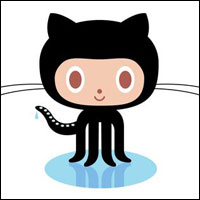
In a momentous move to end a long-standing rivalry, Intel and One Laptop per Child (OLPC) announced Friday that the chip giant has climbed on board the nonprofit group’s effort to produce low-cost laptop computers for developing nations.
OLPC aims to bring laptops and learning opportunities to the most remote areas and poorest children of the world, and has been working toward that goal with the help of Intel’s rival chipmaker AMD. Intel, meanwhile, which originally scoffed at OLPC’s mission, began selling its own low-cost Classmate PC to the developing world in March.
Now the two have agreed to work together “to bring the benefits of technology to the developing world through synergy of their respective programs,” they said. Intel will join the board of OLPC, and the two organizations will explore “collaborations involving technology and educational content,” they added.
Maximum Assistance
“Intel joins the OLPC board as a world leader in technology, helping reach the world’s children,” said Nicholas Negroponte, founder of One Laptop per Child. “Collaboration with Intel means that the maximum number of laptops will reach children.”
“Joining OLPC is a further example of our commitment to education over the last 20 years and our belief in the role of technology in bringing the opportunities of the 21st century to children around the world,” said Paul Otellini, CEO of Santa Clara, Calif.-based Intel.
OLPC aims to bring the price of its Linux-based laptop, which currently costs about US$175 and is due to begin volume shipping in September, down to about $100. Intel’s Classmate, meanwhile, is priced above $200 and uses Windows.
‘A Turning Point’
“This represents a turning point for the project,” Lee Felsenstein, spokesperson for the Fonly Institute, told LinuxInsider.
“It’s like a merger,” he explained. “The interests of both parties are going to be represented. The real open question is which party is more powerful, and I’d put my money on Intel.”
Intel has a research budget well beyond anything OLPC has had, which will complement OLPC’s ongoing focus on development, Felsenstein added. Moving forward, there will doubtless be battles over the project’s final form, he said, focusing in particular on the microprocessor used.
‘800-Pound Gorilla’
“When an 800-pound gorilla gets on a boat, it’s going to tilt,” Felsenstein said. “Intel will have more opportunity to change things on the inside, and AMD could potentially be the big loser.”
Ultimately, Intel’s motivations will have a large impact on the outcome, he added. “How this goes will depend a lot on Intel’s willingness to invest in a new market,” he explained. “Will they invest in it, or will they simply be there to spoil AMD’s chances? It should be interesting to see.”
Indeed, in efforts like this, apart from any altruistic component, the companies involved are not doing it for nothing, Mukul Krishna, global manager of Frost and Sullivan’s digital media practice, told LinuxInsider.
After all, “these companies are not giving the computers away — they are getting paid for them,” Krisha noted. “There is lots of positive free publicity, as well as development grants in developing countries that can be tapped into.”
Creating Loyalty
In the long run, providing computers to young people in developing nations can also be viewed as a way to create brand loyalty in future markets.
“I’m not saying it’s not altruistic, but some of these kids may grow up to be technocrats or executives,” Krishna said. “Companies want to build a loyal customer base from the very beginning.”
All in all, “it’s a very clever move by Intel,” Felsenstein concluded. “It should have been anticipated.”




















































